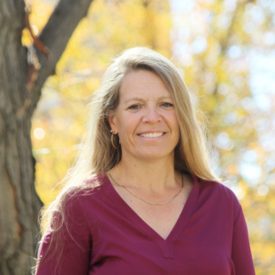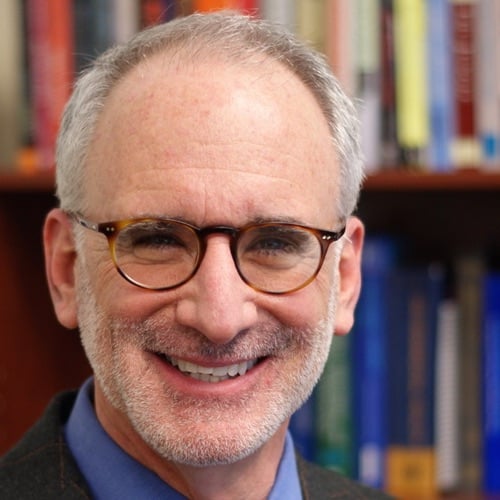What is ozone? What is the difference between the ozone layer in the atmosphere and ground level ozone?
Newman: Ozone is a molecule made up of three oxygen atoms. There are two major layers of ozone in our atmosphere. One is stratospheric – about 10 to 30 kilometers up in the air. This layer is really important for protecting us from the harmful rays of the sun.
The second is tropospheric – what people might refer to as ground level ozone. It’s closer to the surface, the lower atmosphere. One thing that’s important to note is, when you hear people talk about smog, it's mainly ozone as a pollutant that we're talking about. That's the form of ozone that is created by chemical reactions involving pollutants.
How does ground level ozone form?
Newman: Ground level ozone forms from the reaction that occurs between two other kinds of compounds. One is the nitrogen oxides, and the other are what are called volatile organic compounds – VOCs.
Broadly speaking, there are basically four major factors in its formation and prevalence in Colorado: geography, weather conditions, a growing population and our industrial processes and wildfires.
-
Geography: A lot of our cities are in valleys or basins. That traps pollutants, including the precursors that form ozone, the nitrogen oxides and the VOCs. The Front Range corridor is particularly prone to ozone because of our geography and also because of our high population.
-
Weather conditions: We have the combination of sunny days, low humidity and high temperatures, and those are all the right ingredients for the reactions that produce ground level ozone. Which means our summer months are really the most favorable conditions. But we should mention inversions. In Colorado, we can get a layer of warm air that's trapping the cooler air, because of our mountain and valley geography. When you do that, the pollutants are trapped near the surface. This causes more ozone pollution because it can’t escape, disperse or diffuse away.
-
Colorado’s growing population and industry: We have a concentration of oil and gas production, agricultural operations, our vehicles emissions, our power plants – especially coal-fired plants, that all contribute to ozone formation.
-
Wildfires: We're prone to wildfires and they release a lot of nitrogen oxides and volatile organic compounds as well as all the particulates.
Learn more about Colorado's unique air pollution challenges with James and Newman.
James: It’s especially important to note that the presence of sunlight, heat and warmer temperatures makes these ozone-forming reactions occur even faster and more frequently – that is why Colorado is at such high risk. Add to that oil and gas is one of the largest contributors to nitrogen oxides in Colorado, and we're kind of at that perfect nexus of risk factors.
Does ozone pollution go beyond Colorado’s Front Range? Is it a statewide concern?
James: Yes, and we're actually seeing some of these ozone alerts occurring in the mountains. The San Luis Valley has experienced a growing number of ozone alert days, and so has the Western slope. And in these areas, we see a lot of the same instigating factors – oil and gas, other industries and wildfires.
What are the leading causes of ozone pollution by sector?
James: There's been quite a few studies that have evaluated Colorado’s sources of ozone pollution. There's also been national studies that have also evaluated sources with a focus on the western part of the U.S.
In Colorado, the largest single source has been identified as the Comanche Mine. Industry-wise, oil and gas has been identified as a large source. . Overall, personal vehicles, commuting and commercial vehicles are significant sources. So it is not specifically about one industry or cause. It's the combination of multiple sources.
These studies also note personal landscaping – lawn mowers, leaf blowers, anything that runs on gas – as also contributing.
In terms of health impacts, what does ozone do to the body? Who is at risk from ozone pollution?
James: In consideration of exposure there are chronic low-level exposures and acute high level exposure. Populations can be exposed to either or both. Most people are exposed to chronic low levels of ozone in Colorado. This type of exposure can see increases in cardiovascular events– increases in heart attacks and strokes and respiratory events, exacerbations of asthma or COPD (chronic obstructive pulmonary disorder). At times, like on ozone alert days, people can be exposed to high levels which can have immediate effects such as headaches and dizziness
There are some groups more vulnerable to the risk for health outcomes due to exposure.. Children, older adults, people with asthma, lung disease, bronchitis, congestive heart failure, and COPD. We also carefully consider outdoor workers in agriculture, construction, mining, and oil and gas. They are at higher risk for exposure. High ozone days can exacerbate existing health and conditions in any of these vulnerable populations.
Read more: James is working alongside Katie Dickinson, PhD, associate professor of environmental and occupational health and for the Center for Health, Work & Environment on a NIH-funded project to examine issues of climate justice and understand how communities are perceiving some of these threats that are tied to the climate in the San Luis Valley and west Denver and the assistance and approaches these communities want to pursue at the individual, community and policy levels.
Newman: Ozone can trigger coughing, throat irritation, tightness in the chest, shortness of breath. We know this because ozone promotes inflammation. Inflammation stresses the cardiovascular system. It causes what we call oxidative stress in the lungs. The inflammation in our airways, bloodstream and in places like heart muscle can be particularly bad, even life-threatening.
That’s why we caution people to avoid physical activity during high ozone days. Breathing faster and deeper during exercise causes your body to collect more ozone, causing more harm. Just in general, we know that hospitalizations and emergency room visits go up on high ozone days.
Increased ozone levels also increase the risk of respiratory symptoms for people with allergies as they increase reactions to allergens in the environment. So people will notice their allergies and asthma get worse during days of elevated ozone pollution.
What are the health equity issues around ozone pollution in Colorado?
Newman: We see increased ozone risk for communities in lower income communities and in areas where people are living closer to industrial sources.
It also includes those living along major roads. It's been shown especially well in children and people with pre-existing health conditions that if you live close to these roads, you're more highly exposed to ozone, and you're going to have higher risks. And it doesn't have to be a highway; just a highly trafficked local road increases risk.
We’ve seen an increase in ozone alert days over the last 10 years. What’s changed in regulation and monitoring over that period?
James: In 2015, the Environmental Protection Agency (EPA) strengthened regulations to 70 parts per billion (ppb) for ozone – from the higher 75 ppb in 2008. Regulations are to alert people and are important, but when there is a change in a standard there is an inherent increase in alert days. We saw this when arsenic protections in water were strengthened – it doesn't mean the pollution wasn’t there before . Strengthening the standards is important to protect health at a population level and our continued vigilance should be in working to mitigate ozone levels, protecting vulnerable populations on alert days, and constantly evaluating the effectiveness of standards to protect the whole population. .
From a monitoring perspective, we’ve seen an increase in ozone in the San Luis Valley – caused by inversion and pollution originating from New Mexico oil and gas development. This increase has been noted by both state and federal agencies (Colorado Department of Public Health and Environment and EPA) and to inform the public are going to add ozone monitors along the southern border of the state to monitor levels and protect populations..
Newman: Yes, regulatory changes are part of it. And as Kathy mentioned, monitoring is part of it. If we do better monitoring, we have better knowledge when the ozone is high in different parts of the state.
But there are other things that are contributing to the ozone alerts. We mentioned our population growth and how urbanized we're becoming. We have increased industrial activity and economic development. Our vehicular emissions are not going down.
And then climate change is affecting temperature and humidity. The weather patterns are changing, and related to that, the wildfires, which we mentioned earlier. So all of those are factors that are increasing the chances of us having ozone alerts, not just stronger EPA protections.
How do you approach trying to reduce something that can cause so many health effects when the initiating factors are so widespread across different industries and actors?
James: That’s the million-dollar question. There are a lot of great organizations, researchers and community members out there working toward these efforts. It's hard sometimes to move that needle when it comes to policy, because progress happens in small steps.
We’re at the grassroots level protecting people by taking multi-pronged approaches to protect health in the immediate future while taking steps to reduce and prevent exposures in the long term. Key to that is: awareness. That’s one of the big things I’ve learned in the work we’re doing is how important awareness of health issues – and repeating consistent messages – is to communities. Altogether, this forward motion is where we’re going to see long-term protection of health for future generations.
This interview was edited for length and clarity.






